The Little Blue Collar Fact Book
Debunking the Myths and Explaining the Facts about American Manufacturing
Dear Reader,
Defending American factory workers is an exhausting pursuit. You are sure to be mocked by pundits, politicians, professors, and partisans, not to mention your unhinged uncle at Thanksgiving. You’ll hear all sorts of claims and want to scream a rebuttal or just shake your head in disbelief.
Well, today is the day everything changes. That’s because you have now been equipped with a dozen fact-checked zingers. Study them, use them, share them. You might even change a few minds. We hope you like them, and let us know if we can help with any other myths that remain.
Yours truly,
Scott Paul
President
Alliance for American Manufacturing
***

Myth: Nothing is Made in America anymore.
Is it difficult to buy American? Consider the context: In the last 20 years, 90,000 factories closed in the United States. That’s because Washington gave corporations the green light to hunt for cheaper workers and lax labor, environmental and safety rules overseas. So yes, decades of offshoring have made it harder for consumers to find American-made products in every category these days.
Harder, but not impossible.
A little bit of effort goes a long way, and that effort can be as simple as checking the label for a product’s country of origin when you’re shopping. With a little more Internet sleuthing you can typically find an American manufacturer for most items. You’d be surprised what you can get a hold of that’s Made in USA. In fact, there are plenty of American-made consumer products listed in our online directory.
And don’t forget: Businesses burned by shipping problems in recent years have started to see the benefit of shorter supply chains. Manufacturing activity is rapidly increasing to the United States, which means more options are coming for conscientious shoppers.
Truth: There are more Made in America options than you may think.
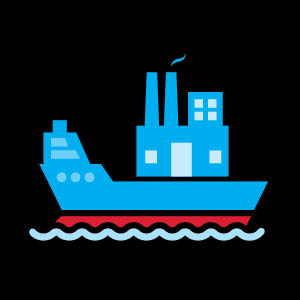
Myth: It’s too expensive to move manufacturing back to America.
According to one widely cited study, China has only a 5% manufacturing cost advantage over the United States. Considering the number of ways China supports its industries – weak environmental and labor laws, massive subsidies and even access to forced labor – that’s a pretty poor return on investment.
The United States, by contrast, has a deep labor pool and a rich market, where manufacturers are constantly innovating to be more productive.
And companies that manufacture in their home market can more quickly respond to commercial trends. There’s a real benefit to that kind of agility.
So does a 5% cost advantage add up? Maybe, but as we saw over the last few years, the promise of cheap goods may be a mirage when you need those products the most. International supply chain snarls led to stalled assembly lines, price spikes and lost sales.
The prospect of slightly lower prices no longer cancels out all the other reasons a company would choose to reshore its production. It’s a big reason why more and more manufacturers are moving back home these days.
Truth: The costly risks of using overstretched supply chains are adding up.

Myth: Chinese imports help Americans by keeping prices down.
Contrary to popular belief, consumer prices in the United States didn’t drop significantly with the introduction of Chinese import competition, but wage growth sure did. Imports have meant American workers have seen their paychecks shrink. The “shock” of a tidal wave of imported goods, often massively subsidized and made in dangerous, inhumane labor conditions, ran a lot of America’s manufacturers out of business and sent their workers looking for new jobs, which often didn’t pay nearly as well.
So where did all the savings go? In many cases, companies offshored manufacturing to boost profits instead of passing any cost savings on to the consumer.
There was, however, a real cost to all the offshoring. Not only did the United States lose 3.7 million American jobs due to the trade deficit with China, we also lost the homegrown capacity to manufacture in critical industries like pharmaceutical drugs and semiconductor chips.
We gutted the middle class and our economic security for the promise of marginally lower sticker prices. It wasn’t worth it.
Truth: Shareholders have made lots of money, but U.S. consumers haven’t saved much.

Myth: Federal investment in manufacturing is a waste of tax dollars.
Over the past several years, Washington enacted nearly $2 trillion in spending on new infrastructure, clean energy manufacturing and high-tech industries in America.
Some critics say this is overkill. Others call it a corporate giveaway. Others still say much of the money will end up spent overseas.
But just look at what’s been done so far: Since these industrial policies have been set up, we’ve seen $475 billion in private investments poured into the construction of major manufacturing facilities across the country.
The economic activity keeps going. These new factories will require long-term investments from the companies making them, meaning spending to maintain them. Then there are the multiplier effects to consider, because new manufacturing facilities require suppliers. Their existence builds out supply chains of their own. And, there you go, a thriving manufacturing ecosystem is built.
All of this means more workers, and more local service industries that will spring up to support those workforces. Communities with workers in them need places like auto repair shops, dry cleaners, restaurants, daycares, and grocery stores.
Beyond creating valuable community-sustaining jobs nationwide, federal investment in manufacturing ensures that America has the capacity to make the things we need when we need them. More on that later.
Truth: Seeding domestic industries is already having a huge and positive economic impact.
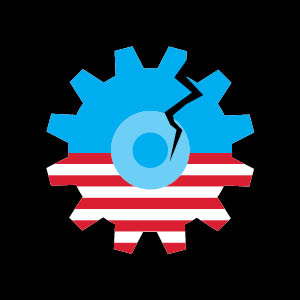
Myth: Buy America sounds good, but doesn’t work.
Let’s start by remembering what Buy America does: It gives domestic manufacturers and American workers the first shot at supplying the materials used to build our public highways, rail, airports, water systems, and other critical infrastructure. When we reinvest taxpayer dollars in American workers and businesses, it circulates in American communities and generates local economic activity. That means Buy America policies get a lot more bang out of the bucks spent on public works.
Now here’s what it doesn’t do: Run up the price tag. Buy America preferences have rules built in to ensure that if a product or material can’t be sourced domestically or is too expensive, a waiver can be granted to keep a project moving. Rather than driving up costs, the demand signals sent by Buy America policies attract domestic investments in manufacturing, spurring competition and strengthening critical supply chains.
Without these laws, the public’s money would be used to purchase construction materials for everything from bridges to broadband cable to electric buses from foreign factories. Buy America policies leverage the power of once-in-a-generation infrastructure spending to deliver economic benefits to American workers, all while rewarding U.S.-based production, promoting a cleaner economy and bolstering our national preparedness.
Truth: Buy America puts American workers first, and it works like gangbusters.

Myth: You can’t tackle climate change without lots of imports.
Here’s something many people don’t know: The modern solar panel was largely invented in the United States. But 70 years later, China dominates the world’s production of them. Today, the supply chains for this clean-tech product run through a region in China that’s become a police state, and many of solar’s inputs are produced in dirty, coal-burning factories and stained by credible reports of forced labor.
It doesn’t have to be this way, which is why the federal government is investing to bring back solar and other critical clean energy industries.
Subsidies for the domestic manufacture of wind, solar and geothermal energy products have been set in place, as have billions of dollars to build out the supply chains necessary to manufacture electric vehicles. This will create significant domestic demand and will drastically increase the adoption of these products. And it makes an important point: If we want to move the country onto clean energy, then more of the products and materials needed to address climate problems must be made in the United States.
Tackling climate change will take a decades-long commitment. The only way to build the durable coalition needed for this fight is to show that investing in clean energy will create good, middle-class American jobs in the way the U.S. oil and gas industry has for years.
Truth: Building domestic clean energy industries is the only way the U.S. will effectively lead on climate change.
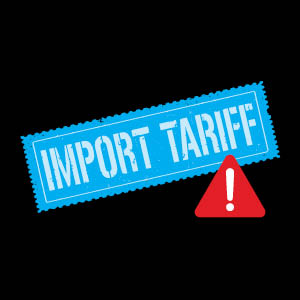
Myth: Tariffs are bad.
Tariffs aren’t bad; they’re a tool that every country uses as part of their trade policy. And they’re especially useful when you are home to a market like ours, which remains one of the least protected in the world. It’s very easy to export to the United States.
Because of low tariff barriers in the U.S., even the suggestion of potential U.S. tariffs can be helpful in removing the many trade barriers American producers face in foreign markets. Tariffs also provide a baseline for trade enforcement. Without them in our toolbox, there would be no way to fight back for domestic manufacturers and workers when companies in other countries like China and Russia cheat.
Violate a U.S. trade law? Face a tariff.
This plays a critical role in leveling the playing field for American workers, ensuring they don’t have to compete with foreign manufacturers that play by different sets of rules. Manufacturers in many other countries receive direct governmental support, or don’t operate under strong environmental or labor laws. Competition should be based on productivity and product quality, not who gets the biggest handouts from their government or who is allowed to pollute the most.
Not every trade arrangement between countries requires tariffs, but they’re a tool we can’t do without.
Truth: Tariffs are a trade tool that every country uses – and we barely use them anyway.

Myth: Americans don’t want to work in manufacturing.
Remember Field of Dreams, the movie where a guy built a baseball diamond in an Iowa cornfield and the ghosts of baseball legends began to show up to play?
“If you build it, they will come.” That saying should be applied when we think about how to create a domestic manufacturing workforce. Yes, there are challenges in some instances to staffing when a business reshores its production. But – and this won’t shock too many people – creating reliable and well-compensated job opportunities is a tried-and-true way to create and maintain an industrial labor pool.
If you create labor demand you will attract labor talent, and it will grow local training programs to deepen local workforce pools. And that says nothing about the programs that industrial unions already have set up to recruit, prepare and retain new workers. That said, far too few federal resources are directed to training and skills programs that don’t require a four-year college degree.
The modern factory floor isn’t dark, dirty or dangerous; it’s clean, dynamic and technology-driven. American workers want these jobs. Manufacturers need to meet them where they are by considering what will make these jobs attainable, like access to transportation and childcare. Consider them workforce realities in the 21st century.
Truth: Americans want good jobs, and manufacturing can provide them.
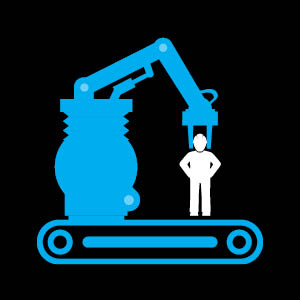
Myth: Robots will eat all the factory jobs.
It takes fewer people to run a fast-food restaurant these days, just as it takes fewer to run an auto plant or steel mill than it did 40 years ago.
But let’s face it: Robots have had very little to do with the factory jobs that have disappeared over the last 20 years. Instead, robots and automation been a convenient distractions from trade policies that have led to massive trade deficits that cost the United States nearly 6 million manufacturing jobs and over 90,000 factories.
American factory workers haven’t been replaced by robots; we just shipped those jobs overseas.
So rather than diverting our attention to the automation doom and gloom, we need to put trade policies in place that will shrink trade deficits by leveling the playing field for American workers. Automation will change the nature of a lot of work that is done in factories, but we’ll still need people with manufacturing know-how. That means more investment in new and existing manufacturing workers, as well as continued investment in industrial research and development. Manufacturing will continue to be an engine that powers our economy, even if more robots are along for the ride.
Truth: Robots aren’t responsible for manufacturing job loss; bad trade policy is.
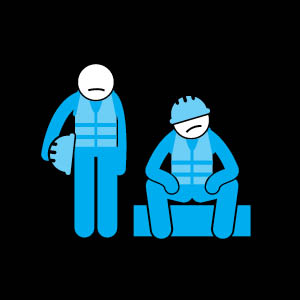
Myth: Manufacturing job loss has only hurt white men.
Critics of policies that reshore production will often claim these efforts have a racist undertone to them – that they want to recreate an economy in which workers in hard hats with lunch pails were all white men.
But they’re overlooking the hundreds of thousands of Black Americans who lost often unionized factory jobs between 1998 and 2020. They’re also overlooking Hispanic workers, and Asian American/Pacific Islanders, and women of every ethnicity who all enjoyed the
wage premium manufacturing pays for people that lack a four-year degree. All of them lost jobs when manufacturing employment plummeted with the rise of Chinese import competition.
This has had far-reaching impacts not only on minority workers themselves but also on their communities. Unemployed and underemployed workers have less money to spend at local businesses, and public services suffer when the tax base dwindles. There are lots of once-thriving industrial heartland communities where workers of all colors have watched their local economies dry up.
The truth is this: Manufacturing jobs pay better than others for the vast majority of all workers who don’t have or want a bachelor’s degree. Bringing more of these jobs back creates more opportunity for everyone who wants to work with their hands – not only white men.
Truth: Manufacturing job loss has hurt everybody.

Myth: Only [insert political party here] is responsible for offshoring.
There are a lot of accusations thrown around in American politics about who is responsible for the waves of deindustrialization that hit the United States in the last 30 years. Did it start when Congressional Republicans lined up behind former President Bill Clinton to open up trade with China? Or was it when the U.S. signed NAFTA and jobs started heading to Mexico? Does it go back even farther than that, when the Japanese auto companies began to swamp the United States in the 1980s?
Identifying a scapegoat would be neat, tidy and convenient for our collective understanding, but the truth is much more complicated: Both major American political parties helped it happen. There have been a few notable holdouts over the years, but bipartisan majorities in Congress voted for these trade deals, and presidents from both sides of the aisle have advocated for them.
No party has a monopoly on blame here. Both bought what the business class was selling them. And, when Washington followed their advice and gave corporations the green light to offshore manufacturing, that’s exactly what they did. And both parties will be needed to reverse decades of failed policies that promoted this mistake. Pointing fingers won’t create factory jobs, but working together will.
Truth: Let’s not kid ourselves. There’s plenty of blame to go around.

Myth: The free market ensures our national and economic security.
Up until 2020, Americans took it for granted that we could get whatever we wanted whenever we wanted it. But there was always a possibility just-in-time production with a far-flung supply chain could break. And then it really, really broke.
COVID-19 happened, and we couldn’t get the things typically found on the shelves, from consumer staples like toilet paper to incredibly important products like pharmaceutical drugs and PPE for medical workers, or semiconductors for automobiles and appliances. The public health crisis of the pandemic is over, but serious threats to international supply chains remain.
Even so, there are significant political efforts to roll back parts of the industrial policies that have been put in place. Boosters of “free markets” say the government shouldn’t be picking winners or losers, or that Washington will screw this all up.
But industrial policy has never been foreign to the United States. Alexander Hamilton, the guy on the $10 bill, came up with the first one. During World War II the Detroit automakers didn’t just decide they were going to build tanks and airplanes; they did so because our government sprang to action.
America’s industrial policy makes companies compete for the money it awards, includes safeguards for taxpayers, and encourages a race to the top by requiring strong labor and environmental rules. And it’s already generated hundreds of billions of dollars of domestic investment in manufacturing.
Truth: In the modern world, industrial policy is necessary to keep the U.S. competitive.
Story Credits: Text by Matthew McMullan, with contributions from Elizabeth Brotherton-Bunch, Cathalijne Adams, and Scott Paul. Book design by Winking Fish.
